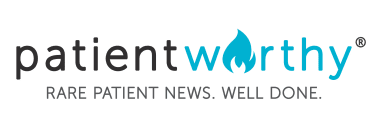A recent announcement by Atomico, one of Europe’s largest venture capital firms based in London, introduced its new partner Healx.
The startup can boast of having the world’s most comprehensive artificial intelligence-based drug discovery platform for rare diseases.
The founders of Healx, Dr. Tim Guilliams, Ph.D., and Dr. David Brown, were inspired after reading about Bertrand Might, an infant who was coping with a rare and undiagnosed disease.
There are about seven thousand rare diseases affecting approximately four hundred million people worldwide. However, treatment is available to only a scant five percent.
The failure rate for drug development is ninety-five percent. Considering the average cost of about two to three billion dollars over a twelve to fifteen-year period, it is understandable that companies focus drug discovery on common diseases. But where does that leave people with rare diseases?
Guilliams and Brown saw the need and intend to do their part in fulfilling that need. Their goal for Healx is to move one hundred rare disease treatments to clinic by 2025.
The company says that it is able to move to clinical trials eighty percent faster with up to ninety percent lower cost. They believe the program will bring with it a higher chance of success than methods currently used for drug discovery.
The First Symptoms
The first symptoms of Bertrand’s rare disease were evident when he was one month old. Matt and Cristina, his parents, noticed that he was constantly “under duress”. By six months he had no motor control and his anxious parents knew something was seriously wrong. Bertrand underwent a series of tests. After several false alarms the doctors decided that he might possibly have a metabolic disorder which may account for the delay in his development. A metabolic disorder would mean Bertrand had a missing or impaired enzyme.
The next step is to locate and identify that enzyme.
A glimmer of hope for Bertrand occurred when he was fifteen months old. Oligosaccharides (sugar molecules) were discovered in his urine. Within a few weeks, after more testing, the possibilities were down to eighteen rare disorders.
There was nothing significant to report until, at age three, Bertrand’s parents enrolled him in a small pilot study with eleven other children who had undiagnosed disorders.
The study was conducted by the genetics team at Duke University using whole-exome sequencing. Until such time as whole-genome sequencing becomes less expensive, exome sequencing is an excellent choice for scientists to use when searching for rare mutations.
By age three Bertrand’s symptoms included multifocal epilepsy, developmental delay, involuntary movements, abnormal functioning of his liver and lack of tear production.
Bertrand was four and a half years old when the study ended. The team at Duke had an answer for his parents. The boy most likely had an very rare disease called N-glycanase deficiency (NGLY1). There are now only eighteen cases in the entire world. The NGLY1 gene has never been previously connected to any disease but it appears to be the cause of Bertrand’s illness. The study has since been published in the Journal of Medical Genetics.
Now almost seven years old, Bertrand functions as a six to an eight-month-old child. He is able to hold a bottle and sit unattended. He can communicate emotions through eye movement and gestures. According to his father, he is generally a happy, healthy boy. Bertrand has a set physical therapy routine. He uses a mechanical aide that can be adjusted to varying degrees of assistance to help him practice walking.
From Computer Science to Medicine
It is easy to see how Dr. Might’s dedication to his son could easily move him from the world of computer science to the world of medicine.
When Bertrand became the first patient worldwide who was diagnosed with NGLY1 deficiency, Dr. Might decided to use social media to locate other patients and form a community. He set up a non-profit dedicated to developing treatments for NGLY1 deficiency. The scientific efforts of the community are responsible for identifying two NGLY1 deficiency therapeutics. Others are actively being developed.
The Need For Funding
Orphan drug development depends on clinical trial funding. The term orphan drug came about due to the fact that research for rare diseases was often neglected as opposed to easily diagnosed diseases.
Dr. Might’s NIH funded research and other philanthropic efforts are geared toward rare disease, chronic conditions, and cancer.
Between 2016 and 2018, he served in President Obama’s Precision Medicine Initiative in the Department of Veterans Affairs and the National Institute of Health.
Healx: Initial Success
If successful, early drug discoveries may be credited to Healx for the development of potential treatments for fragile X syndrome, Pitt-Hopkins syndrome, neuroblastoma, and CDKL5 diseases.
Healx and FRAXA Research Foundation are preparing to begin fragile X clinical trials later this year. Fragile X syndrome is believed to be the leading cause of autism.
Healx has set an impressive goal of advancing one hundred rare disease treatments to clinic by the year 2025. The founders agree that the Fragile X trials are only the beginning of the effect their efforts will have on drug discovery.


